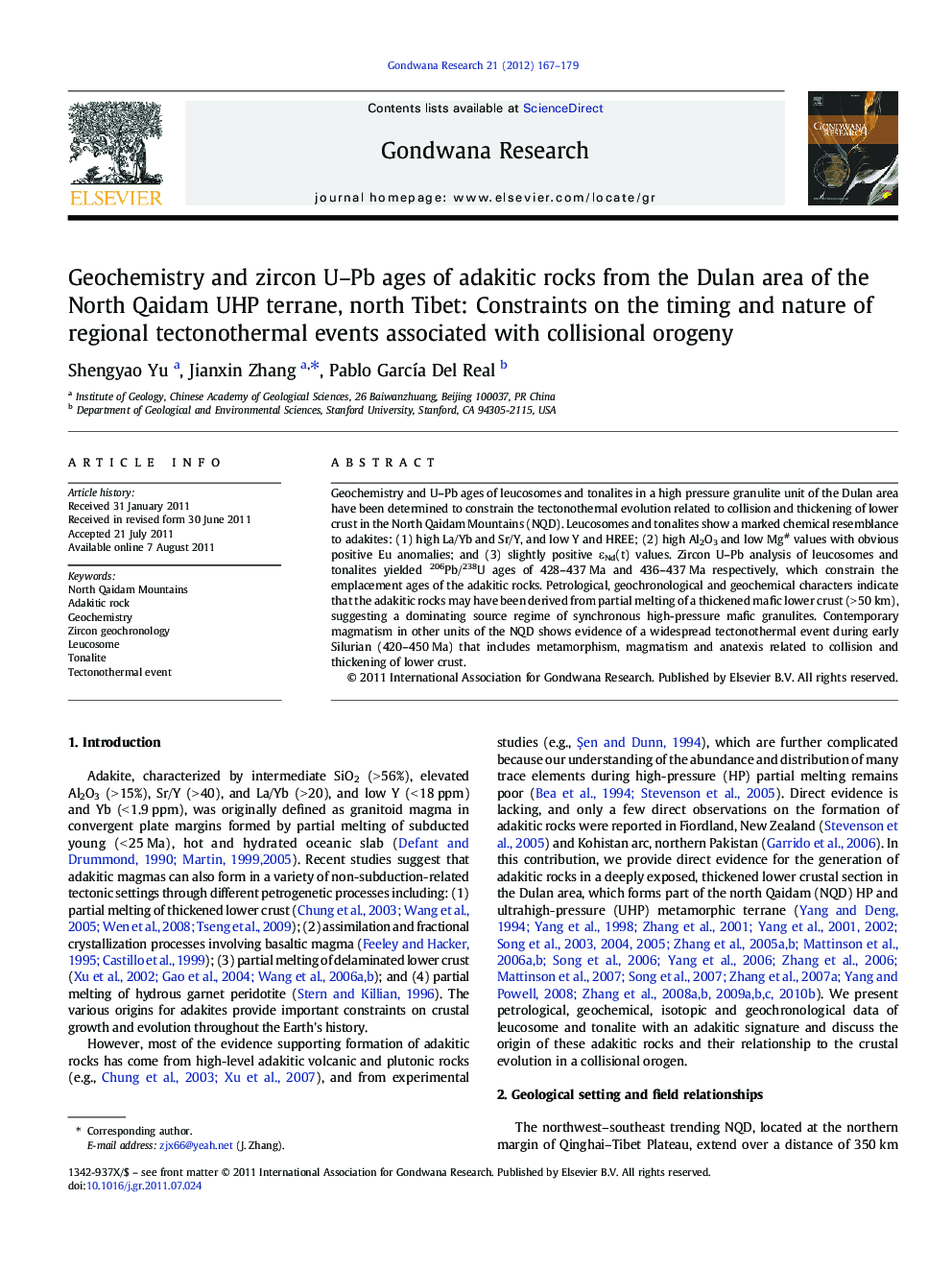| Article ID | Journal | Published Year | Pages | File Type |
|---|---|---|---|---|
| 4727390 | Gondwana Research | 2012 | 13 Pages |
Geochemistry and U–Pb ages of leucosomes and tonalites in a high pressure granulite unit of the Dulan area have been determined to constrain the tectonothermal evolution related to collision and thickening of lower crust in the North Qaidam Mountains (NQD). Leucosomes and tonalites show a marked chemical resemblance to adakites: (1) high La/Yb and Sr/Y, and low Y and HREE; (2) high Al2O3 and low Mg# values with obvious positive Eu anomalies; and (3) slightly positive εNd(t) values. Zircon U–Pb analysis of leucosomes and tonalites yielded 206Pb/238U ages of 428–437 Ma and 436–437 Ma respectively, which constrain the emplacement ages of the adakitic rocks. Petrological, geochronological and geochemical characters indicate that the adakitic rocks may have been derived from partial melting of a thickened mafic lower crust (> 50 km), suggesting a dominating source regime of synchronous high-pressure mafic granulites. Contemporary magmatism in other units of the NQD shows evidence of a widespread tectonothermal event during early Silurian (420–450 Ma) that includes metamorphism, magmatism and anatexis related to collision and thickening of lower crust.
Graphical abstractFigure optionsDownload full-size imageDownload as PowerPoint slideHighlights► Adakitic leucosome and tonalite recognized in Dulan area. ► The adakitic rocks formed during 428–437 Ma. ► They were derived from partial melting of a thickened mafic lower continental crust.
